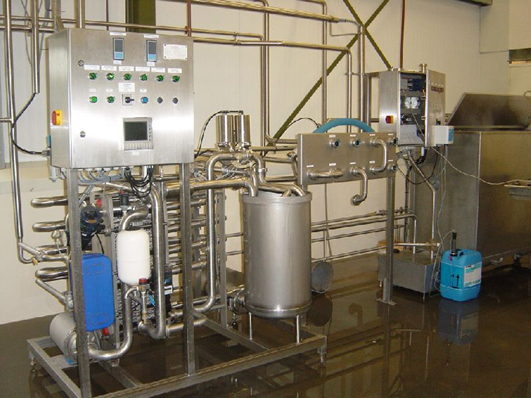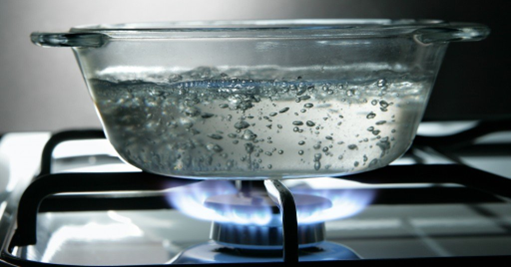STERILIZATION
· Sterilization
is defined as a process in which an article, surface or medium is free of all
living organisms.
·
Sterilization
is the process of killing of microorganisms.
·
Sterilization
was carried out by two methods.
A) Physical method
a) Drying
b) Dry heat
i. Flaming
ii. Incineration
iii. Hot air (Hot air oven)
c) Moist heat
i. Pasteurization (Temperature below 100 °C)
ii. Boiling (Temperature at 100 °C)
iii. Tyndallization (Temperature above 100 °C)
iv. Autoclaving (Temperature above 100 °C)
d) Filtration
i. Candle filter
ii. Asbestos filter
iii. Sintered glass filter
iv. Membrane filter
e) Radiation
i. Non – ionizing radiations (Infrared radiation and
Ultraviolet radiation)
ii. Ionizing radiations (X – rays, Gamma rays and Cosmic rays)
PHYSICAL METHOD OF STERILIZATION
(a) DRYING
· Moisture is essential for the growth of bacteria. Four
– fifth of the weight of the bacterial cell is due to bacteria.
· Drying in has a deleterious effect on many bacteria.
· Spores are unaffected by drying.
(b) DRY HEAT
i) Flaming
· In Flaming, inoculation loops, tips of forceps and
spatulas are held in a Bunsen burner flame till they become red hot.
Sterilization of
Inoculation loop by Flaming (Source: microbeonline.com)
ii) Incineration
· Incineration is an excellent method for safely
destroying materials such as contaminated cloth, animal carcasses and
pathological materials.
· The equipment used for the Incineration process is
Incinerator.
Laboratory Incinerator (Source: indiamart.com)
iii) Hot air oven
· Sterilization by Hot air oven is the most widely used
method for sterilization by Dry heat.
· Hot air oven is used to sterilize glasswares, forceps,
scissors, scalpels, glass syringes and swabs.
· “Temperature required for sterilization is inversely
proportional to Time” is the principle of Hot air oven.
Hot Air Oven
· During the sterilization of materials in Hot air oven,
the sterilization time was reduced when the sterilization temperature was
increased.
·
Temperature and
duration for Hot air oven sterilization is
§
140 °C for 11/2
hours
§
160 °C for 1
hours
§
180 °C for 1/2
hours
· Fan is present
in the Hot air oven and circulates the hot air. The circulating hot air
sterilizes the materials which were kept for sterilization.
· Sterilization
by Hot air oven kills the microorganisms by denaturation of proteins.
· Overloading of materials should be avoided during Hot
air oven sterilization.
· The products to be sterilized in Hot air oven should
be wrapped completely.
· The Hot air oven must be allowed to cool slowly for
about two hours before the door is opened because the glassware may crack due to
sudden or uneven cooling.
(c) MOIST HEAT
i)
Pasteurization
· Pasteurization is the fractional sterilization process
of milk.
· Pasteurization technique was introduced by Louis
Pasteur.
· Pasteurization was carried out by two methods.
1. Holder method (63 °C for 30 minutes)
2. Flash method (72 °C for 15 - 20 seconds)
· During Pasteurization, all the spore forming bacteria
and heat resistant bacteria were killed.
Milk Pasteurization Plant
in Industries (Source:
exportersindia.com)
ii) Boiling
· Vegetative bacteria are killed almost immediately at
90 – 100 °C, but spore forming bacteria required prolonged period of boiling.
· Boiling is not recommended for the sterilization of
instruments.
· Boiling is usually preferred for cooking the food
materials.
Boiling
of Water (Source: bloggingheros.com)
iii) Tyndallization
· Tyndallization is a process dating from the
nineteenth century for sterilizing substances, usually food, named
after its inventor, scientist John Tyndall.
·
It is still
occasionally used.
·
Tyndallization
can be used to destroy the spores.
·
Tyndallization
essentially consists of heating the substance to boiling point (or just a
little below boiling point) and holding it there for 15 minutes, three days in
succession.
· After each
heating, the resting period will allow spores that have survived to germinate
into bacterial cells; these cells will be killed by the next day's heating.
iv) Autoclave
· An autoclave is a pressure chamber used to
carry out the sterilization under pressure (Moist heat).
Autoclave
· The mechanism of the autoclave is similar to the pressure
cooker.
· Autoclave works under the principal of Boyl’s Law –
“When volume is constant, temperature is directly proportional to time”.
·
Temperature and
duration for Autoclave sterilization is 121 °C or 15 lbs for 20 minutes.
· During
autoclaving, water boils when its vapor pressure equals that of the surrounding
atmosphere. Hence when the pressure inside a closed vessel increases, the
temperature at which water boils also increase.
·
At the time of
autoclaving, steam was produced and sterilizes the materials which were kept
for sterilization.
·
Sterilization
by autoclaving kills the microorganisms by coagulation of proteins.
· Overloading of materials should be avoided during
autoclaving.
· The products to be sterilized in autoclaving should be
wrapped completely.
· The autoclave must be allowed to free for 15 minutes
for the release of pressure.
· Autoclave is used to sterilize the dressings,
instruments, laboratory ware, culture media and pharmaceutical products.
(d) FILTRATION
· Filtration helps to remove the bacteria from heat
liable substances such as serum, sugar solutions or antibiotics used for the
preparation of culture medium.
· Four types of filtrations are commonly used for the
sterilization process. They are
i. Candle filters
ii. Asbestos filters
iii. Sintered glass filters
iv. Membrane filters
i) Candle filters
· Candle filters
are manufactured in different grades of porosity.
· They have been
widely used widely for the purification of water for drinking and industrial
process.
·
They are of two
types:
1. Unglazed ceramic filters (e.g) Chamberland filter and
Doulton filter
2. Diatomaceous earth filters (e.g.) Berkefeld filter and
Mandler filter
ii) Asbestos filter
·
Asbestos
filters are disposable, single – use discs.
·
They have high
absorbing capacity and tend to alkalinize filtered liquids.
·
The
carcinogenic potential of asbestos has discouraged their uses.
·
Examples of
Asbestos filter include Seitz filters and Sterimat filters.
iii) Sintered glass filter
·
Sintered
filters are prepared by heat fusing finely powdered glass particles of graded
size.
·
They have low
absorptive property and can be cleaned easily but are brittle and expensive.
Sintered Glass Filter
iv) Membrane filters
·
Membrane
filters are made up of cellulose esters or other polymers have largely replaced
other types of filters.
·
Membrane
filters are routinely used in water purification and analysis, sterilization
and sterility testing and for preparation of solutions for parental use.
Membrane Filter
(e) RADIATION
· Two types of
radiations are used for sterilization. They are
a) Non – ionizing radiation
b) Ionizing radiation
i) Non – ionizing radiation
· Infra red and
Ultraviolet rays are the non – ionizing low energy type.
· Infra red
radiation is used for rapid mass sterilization of prepacked items such as syringes
and catheters.
· Ultraviolet
radiation is used for disinfecting enclosed areas such as entry ways, operation
theaters and laboratories.
ii) Ionizing radiation
· X – rays, Gamma
rays and Cosmic rays are high energy ionizing type.
·
Ionizing
radiations are lethal to DNA and other vital constituents.
· They have high
penetrative power.
· Ionizing radiations are used to sterilize plastics, swabs, catheters, animal feeds, cardboards, oils, greases, fabrics and metal foils.
QUALITY CONTROL AND STERILITY
CHECKING
· Scientists use
several means to ensure that an autoclave has sterilized its contents.
· A biological
indicator of sterility uses endospores of the bacterium Bacillus
stearothermophilus impregnated into tape.
·
After autoclaving, the tape is aseptically
inoculated into sterile broth.
· If no bacterial growth appears, the original material is considered sterile. If bacterial growth appears, the material is considered non-sterile.








Comments
Post a Comment